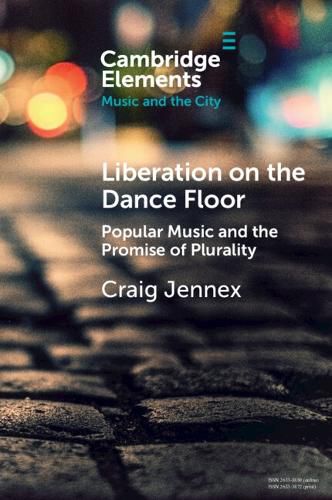Readings Newsletter
Become a Readings Member to make your shopping experience even easier.
Sign in or sign up for free!
You’re not far away from qualifying for FREE standard shipping within Australia
You’ve qualified for FREE standard shipping within Australia
The cart is loading…






Lesbian and gay liberation movements of the twentieth century were made possible through heterogeneous dance music cultures that flourished in urban spaces. In an era of profound political challenges, collective dance enabled lesbian and gay individuals to connect with their bodies and the bodies of others, experience a sense of communal belonging, explore non-normative gender and sexual desires, and perceive individual and collective power in a heteronormative reality that regularly suppressed both. For lesbians and gays, collective dance introduced them to difference as a dynamic catalyst of political change, allowing them to experience the promise of liberation. This Element combines ethnographic research, archival materials, and popular music histories to analyze the role of popular music participation in lesbian and gay liberation in US cities and demonstrate how collective dance served as a transformative site of political contestation and imagination. This title is also available as Open Access on Cambridge Core.
$9.00 standard shipping within Australia
FREE standard shipping within Australia for orders over $100.00
Express & International shipping calculated at checkout
Lesbian and gay liberation movements of the twentieth century were made possible through heterogeneous dance music cultures that flourished in urban spaces. In an era of profound political challenges, collective dance enabled lesbian and gay individuals to connect with their bodies and the bodies of others, experience a sense of communal belonging, explore non-normative gender and sexual desires, and perceive individual and collective power in a heteronormative reality that regularly suppressed both. For lesbians and gays, collective dance introduced them to difference as a dynamic catalyst of political change, allowing them to experience the promise of liberation. This Element combines ethnographic research, archival materials, and popular music histories to analyze the role of popular music participation in lesbian and gay liberation in US cities and demonstrate how collective dance served as a transformative site of political contestation and imagination. This title is also available as Open Access on Cambridge Core.